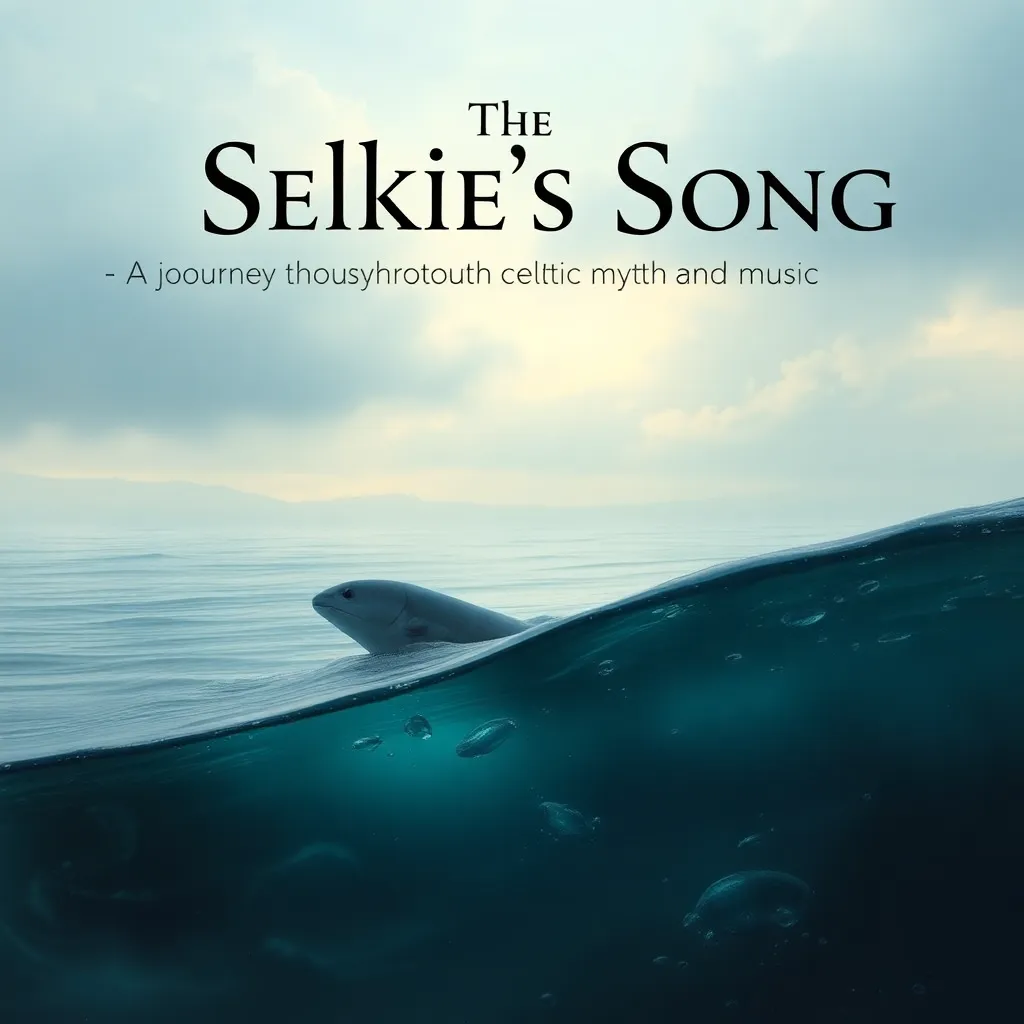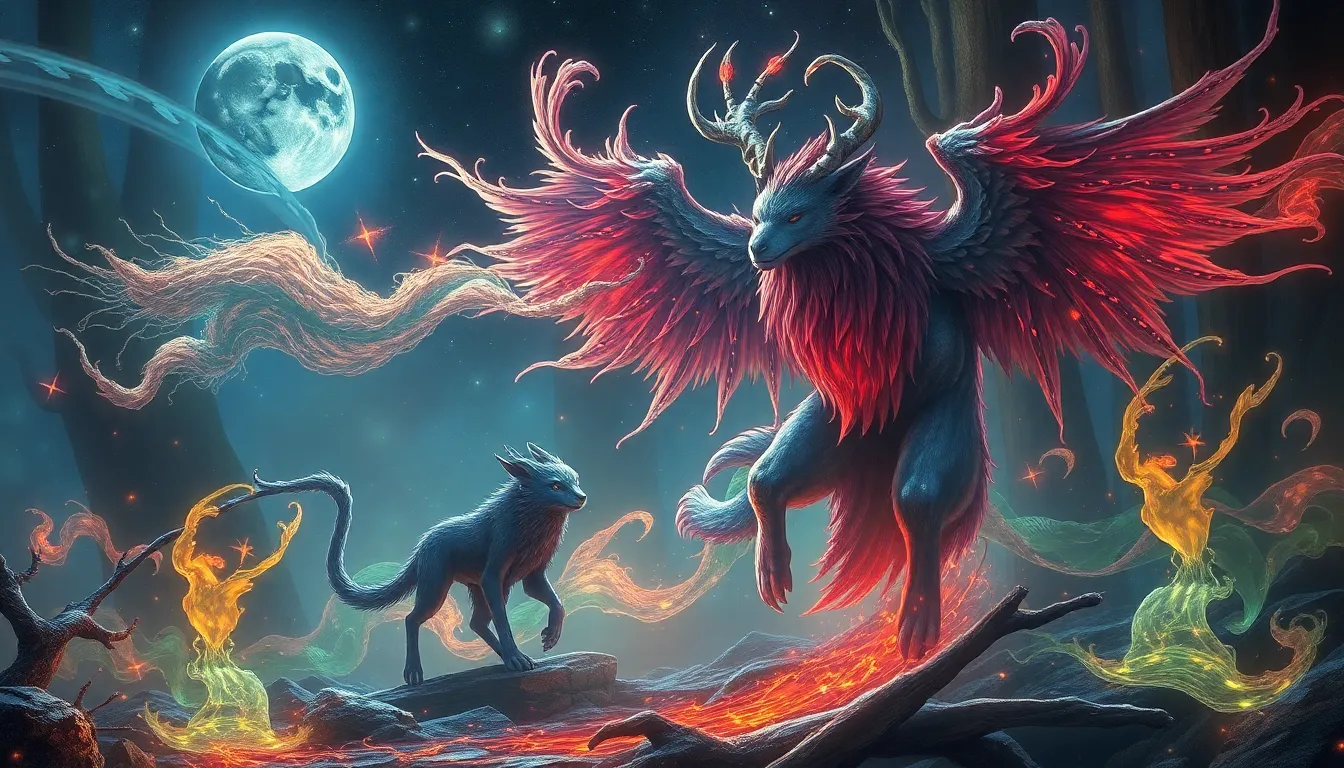The Selkie’s Song: A Journey Through Celtic Myth and Music
I. Introduction to Selkie Lore
Selkie mythology is a captivating and rich aspect of Celtic folklore, particularly found in the coastal regions of Scotland, Ireland, and the Orkney and Shetland Islands. Selkies are said to be magical creatures that can transform from seals into humans by shedding their seal skins. These enchanting beings embody both the allure and danger of the sea, representing the duality of human nature and the mysteries of the ocean.
In Celtic culture, Selkies are often depicted as beautiful women who, when on land, can captivate human hearts. The stories of Selkies emphasize themes of love, loss, and the struggle for freedom, making them an enduring part of folklore. The importance of Selkie stories lies not just in their entertainment value but also in their ability to convey deeper truths about the human condition and our relationship with nature.
II. The Mythical Nature of Selkies
Selkies possess a unique duality, embodying both the characteristics of seals and humans. In their seal form, they are graceful and agile in the water, while in their human form, they are often depicted as strikingly beautiful individuals. This transformation is a central theme in many Selkie tales, highlighting the fluidity of identity and the connection between humans and nature.
Common themes in Selkie stories include:
- The allure of the sea and the dangers it presents.
- The conflict between human desires and the call of nature.
- The idea of belonging and the longing for home.
Variations in Selkie stories can be found across different Celtic regions, with each culture adding its own nuances to the lore. For instance, in some tales, Selkies are portrayed as tragic figures, while in others, they are seen as playful and mischievous.
III. The Symbolism of Transformation
The transformation of Selkies from seals to humans serves as a powerful metaphor for change and duality. This dual nature reflects the complexities of human existence, where individuals often navigate between different roles and identities. The significance of change is particularly poignant in Selkie myths, as characters grapple with their desires and the consequences of their choices.
Freedom and captivity are recurring themes in these stories. Selkies often yearn for the freedom of the sea, while humans may seek to possess and control them. This tension creates emotional and psychological implications, as characters face the consequences of their actions and the inherent struggle between love and autonomy.
IV. The Role of Music in Selkie Legends
Music plays a vital role in the storytelling of Selkie legends. Traditional songs often accompany these tales, enhancing their emotional depth and cultural resonance. The connection between music and Selkie stories can be seen in various musical motifs that evoke the sea, seals, and the mystical qualities of these creatures.
Analysis of musical motifs reveals how composers and performers draw inspiration from the ocean’s rhythms and the haunting beauty of Selkie lore. Instruments such as the harp, fiddle, and tin whistle frequently feature in these songs, creating an atmosphere that transports listeners to the coastal landscapes of Celtic mythology.
Additionally, music serves as a means of cultural memory, preserving the stories of Selkies for future generations. The melodies and lyrics encapsulate the essence of the myths, allowing audiences to connect with their heritage.
V. The Selkie in Contemporary Culture
In contemporary culture, Selkie myths have found new life through adaptations in literature, film, and art. Modern interpretations often explore the themes of identity and belonging, resonating with audiences in today’s diverse societal landscape. Works such as novels, films, and visual art draw on the rich tapestry of Selkie lore, reimagining these timeless stories for a new generation.
The resurgence of interest in Celtic mythology can be attributed to various factors, including a broader movement towards exploring folklore, environmental awareness, and a desire to reconnect with cultural roots. As people seek to understand their identity in a rapidly changing world, Selkie myths offer a captivating lens through which to examine the human experience.
VI. The Intersection of Myth and Reality
Selkie myths are deeply rooted in historical contexts, often reflecting the lives of coastal communities and their relationship with the sea. These myths may have originated from the real experiences of fishermen and their families, who relied on the ocean for sustenance and livelihood. The stories of Selkies capture the awe and fear that the sea inspires in those who depend on it.
Furthermore, the connection between Selkie folklore and environmental changes is significant. As climate change impacts coastal ecosystems, the stories of Selkies remind us of our fragile relationship with nature. They serve as a metaphor for the loss of habitat and the transformation of marine life, prompting reflection on the importance of environmental stewardship.
VII. Selkie Songs: A Deep Dive into Notable Examples
Among the many songs inspired by Selkie lore, “The Selkie’s Song” stands out as a poignant example. This traditional Scottish ballad beautifully captures the essence of the Selkie’s longing for the sea and the heartache of separation. The lyrics evoke vivid imagery of the ocean, encapsulating the bittersweet nature of Selkie tales.
Another notable example is “The Sealwoman’s Sea,” a contemporary adaptation that explores the themes of identity and transformation. This song resonates with modern audiences, reflecting the ongoing relevance of Selkie myths.
The cultural significance of these songs in modern Celtic music cannot be overstated. They serve as a bridge between past and present, connecting listeners to their heritage and the timeless themes of love and loss. Contemporary artists often cite Selkie lore as a source of inspiration, creating new interpretations that keep the myths alive.
VIII. Conclusion: The Enduring Legacy of the Selkie’s Song
In conclusion, the legacy of the Selkie’s song endures as a testament to the power of storytelling and myth in human experience. Selkie myths continue to resonate, offering insights into our relationship with nature, identity, and the complexities of love and freedom. The role of music in preserving these tales highlights the importance of cultural memory, ensuring that the stories of Selkies will be passed down through generations.
As we reflect on the continuing relevance of Selkie myths, we recognize the profound impact they have on our understanding of the world and ourselves. Through the lens of these enchanting stories, we are reminded of the beauty and mystery of life, the ocean, and the enduring power of myth.



